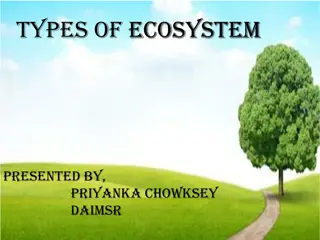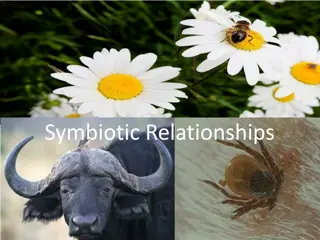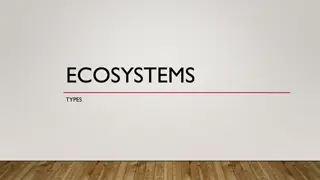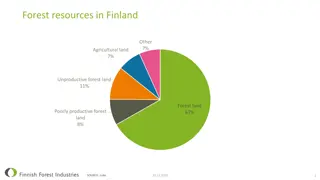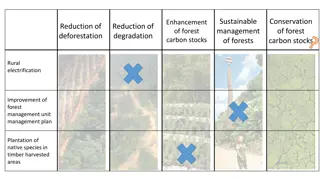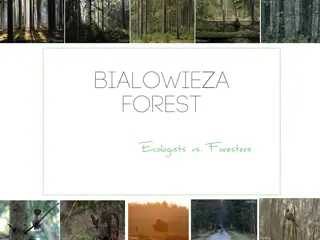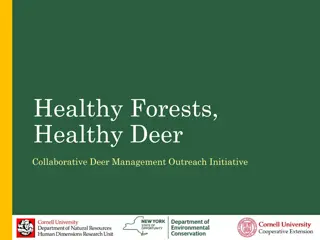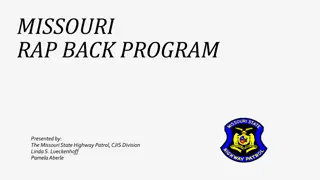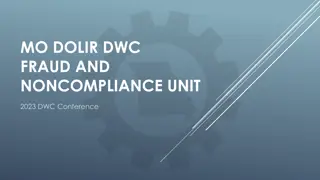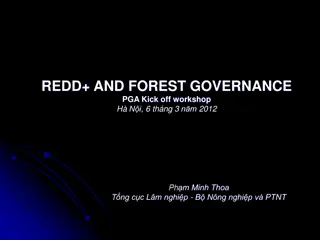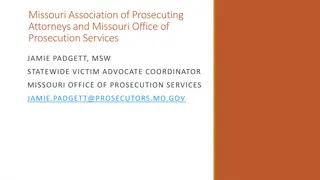Exploring Symbiotic Relationships in Missouri Forest Ecosystems
Delve into the intricate web of cooperative interrelationships within Missouri forests, where diverse communities coexist in a delicate balance. Discover the concept of ecosystems, from deserts to lakes, and learn about symbiosis through examples of parasitism and commensalism. Explore the fascinating dynamics of mutualism and the diverse species that thrive in these unique habitats.
Download Presentation

Please find below an Image/Link to download the presentation.
The content on the website is provided AS IS for your information and personal use only. It may not be sold, licensed, or shared on other websites without obtaining consent from the author. Download presentation by click this link. If you encounter any issues during the download, it is possible that the publisher has removed the file from their server.
E N D
Presentation Transcript
COOPERATIVE INTERRELATOINSHIPS IN MISSOURI FORESTS
ECOSYSTEM All the organisms and the non-living environment within a defined area
COMMUNITY Consists of all the interacting animal populations within an ecosystem.
MANY DIFFERENT COMMUNITIES EXIST IN A SINGLE FOREST
SYMBIOSIS Two species living together in close association over an extended time. Also called symbiotic relationships
3 TYPES OF SYMBIOSIS 1. PARISITISM 2. COMMENSALISM 3. MUTUALISM
PARISITISM A symbiotic relationship where the organism lives in or on their host and does harm to their general well being, sometimes parasites are fatal. The parasite benefits, the host does not.
ONE EXAMPLE OF PARISITISM Ticks on a deer.
COMMENSALISM A symbiotic relationship where one species benefits, the other is not affected positively or negatively.
ONE EXAMPLE OF COMMENSALISM Birds nesting in a tree
Certain species of millipede and silverfish inhabit the nests of army ants and live by scavenging on the refuse of their hosts, but without affecting the ants.
MUTUALISM A symbiotic relationship where both organisms benefit from the relationship.
ONE EXAMPLE OF MUTUALISM Bees and flowers
This powerpoint was kindly donated to www.worldofteaching.com http://www.worldofteaching.com is home to over a thousand powerpoints submitted by teachers. This is a completely free site and requires no registration. Please visit and I hope it will help in your teaching.



